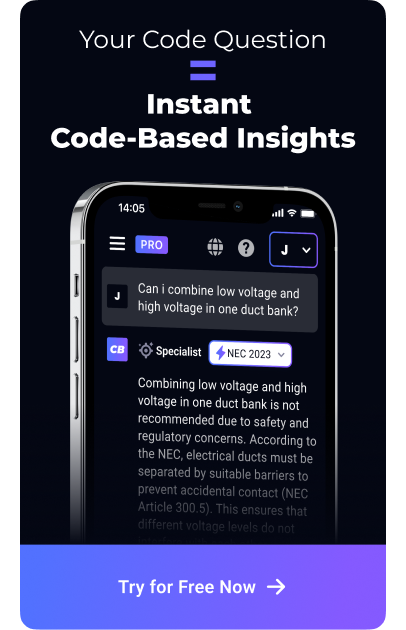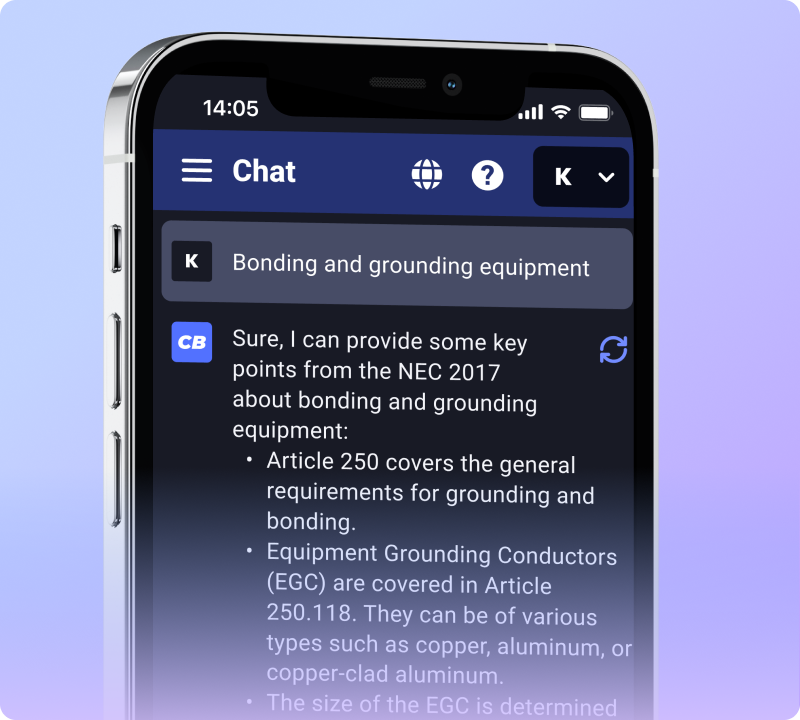Many people find understanding NEC solar installation codes confusing. The National Electrical Code (NEC) first included guidelines for solar PV systems in 1984. This blog will explain these rules in a way that’s easy to grasp, ensuring your solar projects meet all the necessary standards and regulations.
Keep reading to make sense of it all.
Key Takeaways
- NEC codes for solar and solar-plus-storage systems provide important guidelines. They ensure safety and efficiency in installations. The National Electrical Code first included these systems in 1984.
- Key NEC articles like Article 690 and Article 705 are essential for installers. They cover solar photovoltaic systems and interconnected electric power sources. These codes demand compliance with safety standards.
- Fire codes, structural codes, and outdoor equipment requirements aim to minimize risks. Compliance with these regulations is vital for both residential and commercial setups.
- Permitting processes and proper inspections guarantee that installations meet local and national standards. They help avoid fines or delays in project completion.
- Customer satisfaction highly depends on following the latest NEC updates during installation. Professional services respecting NEC regulations receive positive reviews, highlighting their reliability and attention to detail.
Understanding NEC Codes for Solar and Solar-Plus-Storage
NEC codes shape how we install solar and solar-plus-storage systems. These guidelines ensure safety and efficiency in every project.
Importance of codes and standards
Codes and standards play a vital role in solar installations. The NEC codes for solar and solar-plus-storage systems guide technicians through multiple articles to achieve compliance.
Compliance ensures safety and effectiveness in these installations. The National Electrical Code (NEC) first included solar PV systems back in 1984 and has remained critical since then.
The latest updates, like those from the 2023 revisions, impact installation practices significantly. Solar professionals must understand these changes. Following electrical safety requirements protects both installers and users of photovoltaic systems.
Proper identification, signage, and labeling for solar equipment come directly from NEC guidelines as well as International Fire Code provisions.
Overview of NEC codes for solar PV systems
NEC codes for solar PV systems offer essential guidelines for safe installations. The National Electrical Code (NEC) first included these systems in 1984. This code is crucial across the United States and its territories.
Technicians must comply with multiple articles within the NEC to ensure proper installation of solar-plus-storage systems. Key updates in the NEC 2020 emphasize wire management, disconnect safety, and other important factors.
The latest revisions in 2023 bring significant changes affecting solar engineering practices. Compliance with these codes guarantees safety and efficacy for both photovoltaic system requirements and energy storage solutions.
Installers must follow labeling requirements outlined by both the NEC and International Fire Code (IFC). Understanding these codes helps installers uphold high standards within the solar industry regulations.
Key NEC Codes for Solar Installers
Key NEC codes provide essential guidelines for solar installers. Article 690 focuses on solar photovoltaic systems, ensuring safe and efficient installations.
Article 690: Solar Photovoltaic (PV) Systems
Article 690 of the National Electrical Code (NEC) covers Solar Photovoltaic (PV) Systems. This article outlines essential requirements for installing solar energy systems. It includes safety standards and practices that technicians must follow to ensure compliance with NEC regulations.
Installers need to stay updated on changes from the NEC 2020 revisions, which include wire management and disconnect safety. Following these codes helps ensure safe installations for residential and commercial solar systems.
Compliance with Article 690 is vital for effective solar power operations.
Article 705: Interconnected Electric Power Production Sources
Article 705 covers the rules for interconnected electric power production sources, including solar PV systems. This article ensures that these systems safely connect to the grid and other energy sources.
The NEC requires compliance with specific standards during installation and inspections. Solar installers must stay updated on the NEC codes, especially after the 2023 revisions.
These updates impact both commercial and residential solar installations significantly. Technicians need to follow these guidelines closely to meet safety requirements and ensure efficiency in solar energy use.
Proper labeling and identification of equipment are crucial for safe operation as outlined by NEC regulations. Next, we will look at fire codes for energy storage systems.
Fire codes for energy storage systems
Fire codes for energy storage systems focus on safety and compliance. The NEC outlines specific requirements for these installations. Technicians must follow regulations to minimize fire risks.
Proper identification, signage, and labeling are essential components as detailed in the NEC and International Fire Code (IFC). The latest updates in the 2023 NEC emphasize updated practices affecting solar energy systems.
Compliance with fire codes ensures that battery storage units operate safely alongside solar panel installations. These guidelines protect both residential and commercial spaces from potential hazards linked to electrical equipment.
Understanding these codes is vital for installers aiming to achieve safe and effective solar-plus-storage solutions. Many regions require adherence to these standards during permitting processes, reinforcing their importance within the broader landscape of renewable energy standards.
Structural codes for solar panel installations
Structural codes for solar panel installations ensure safety and durability. These codes outline the requirements for roof strength and the secure attachment of solar panels. Installers must follow these structural guidelines to prevent damage during severe weather events.
The NEC requires compliance with these standards as part of the solar installation regulations.
Updates in the NEC 2023 have introduced crucial changes affecting how installers approach structural integrity. Solar PV installers benefit from a clear understanding of these requirements to provide safe solutions.
Compliance ensures that systems function well while meeting electrical code guidelines and protecting property owners’ investments in solar energy systems.
Permitting and Inspection Guidelines for Solar Installations
Obtaining the right permits and ensuring thorough inspections are crucial steps in the solar installation process. These actions help guarantee safety and compliance with regulations.
Check back for detailed insights into these important guidelines!
Obtaining necessary permits
Permits play a crucial role in solar installation. Technicians must secure the necessary permits before starting any work. Local governments and municipalities often require these documents to ensure compliance with safety regulations.
The National Electric Code (NEC) requires that photovoltaic (PV) and energy storage system installations adhere to the latest standards for both initial setup and inspections. Each state may have specific guidelines, making research essential for installers.
Proper permitting protects homeowners and professionals alike. It provides legal assurance that the project meets all local codes, including those set forth by NEC 2020 updates regarding wire management and disconnect safety.
Additionally, adherence to permitting laws helps avoid potential fines or delays in project completion, ensuring timely service delivery in solar power compliance projects.
Importance of proper inspection
Proper inspection of solar installations is crucial for safety and compliance. The NEC codes for solar and solar-plus-storage systems highlight the need for inspections at every stage.
These inspections ensure that technicians meet all installation requirements outlined in the National Electrical Code (NEC) 2020 updates. Solar PV installers should understand wire management, disconnect safety, and other critical aspects during these checks.
The NEC mandates adherence to its most current edition during initial installations and inspections. Compliance guarantees that solar energy regulations protect both the installer and homeowner.
Detailed identification, signage, and labeling requirements exist within both the NEC and International Fire Code (IFC). Following these guidelines leads to safe operations of photovoltaic system equipment while reducing future risks associated with improper setups.
Photovoltaic System Equipment Compliance
5. Photovoltaic System Equipment Compliance: Ensure your outdoor electrical equipment meets the latest NEC regulations for safety and efficiency. Check back to discover more details on compliance requirements!
Outdoor electrical equipment requirements
NEC codes specify outdoor electrical equipment requirements for solar installations. These regulations ensure that all components endure harsh weather while maintaining safety. Installers must comply with NEC standards and the International Fire Code (IFC) to meet these demands.
Key aspects include proper labeling of equipment and adherence to fire safety measures.
Technicians should also follow guidelines for wire management and disconnect safety, especially after the updates in the NEC 2020. Understanding these rules is essential for ensuring effective compliance during inspections.
Meeting outdoor electrical regulations strengthens system reliability and customer satisfaction. Next, we will explore permitting and inspection guidelines for solar installations.
Compliance with NEC regulations
Solar installations must comply with NEC regulations to ensure safety and reliability. The National Electrical Code (NEC) first included solar photovoltaic systems in 1984. Since then, it has evolved to adapt to new technologies and practices.
The latest updates from NEC 2023 introduce vital changes that affect installation methods for both commercial and residential solar systems.
Compliance includes following guidelines on wire management, disconnect safety, and equipment labeling. These codes help technicians navigate multiple articles tailored for solar and solar-plus-storage systems.
Meeting these requirements ensures efficient performance while protecting users from hazards. Proper adherence also streamlines the permitting process and enhances inspection outcomes for successful installations.
Next, we’ll explore the permitting and inspection guidelines for solar installations.
Customer Reviews and Recommendations for NEC Solar
Customers share their positive experiences with NEC Solar installations. They appreciate the quality of service and professional team. Many highlight the attention to detail in every project.
Their recommendations showcase NEC’s commitment to excellence in solar energy solutions. Explore these reviews to see how they can guide your decisions.
Customer satisfaction and positive reviews
Customers enjoy positive experiences with NEC-compliant solar installations. They appreciate the reliability of professional services that adhere to current NEC codes and standards.
Satisfaction stems from proper installation practices, which ensure safety and efficiency in solar systems.
Reviews often highlight compliance with regulations like Article 690 and Article 705. These codes prevent issues during inspections, benefiting both residential and commercial projects.
Many clients recognize the importance of using updated guidelines for solar panel installations. Their feedback emphasizes how skilled technicians enhance the overall experience in navigating solar energy standards.
Reliable and professional solar installation services
Solar installations depend on reliable and professional services. These experts ensure compliance with NEC codes for solar equipment. Following the most up-to-date NEC 2023 revisions is essential for safety and effectiveness.
Solar professionals must stay informed about changes in wire management, disconnect safety, and more. Compliance with these guidelines guarantees that installers meet necessary permitting requirements.
Proper labeling of solar equipment protects users and meets NEC standards. Technicians help clients navigate the permitting process to guarantee smooth inspections. They offer their understanding of both commercial and residential systems under International Solar Energy Provisions (ISEP).
Satisfied customers often highlight the importance of expert installation services in their reviews. Reliable technicians play a key role in promoting energy efficiency through effective solar power guidelines.
Conclusion
Understanding NEC solar installation codes is crucial for installers. These guidelines ensure safety and compliance. Staying updated with the latest revisions helps professionals meet standards.
Proper knowledge of permits and inspections protects both users and systems. Embracing these codes fosters successful solar projects across the country.
FAQs
1. What is the NEC National Electrical Code for solar installation?
The NEC National Electrical Code sets guidelines for safe electrical equipment installation, including solar technology codes. It’s crucial for compliance in solar system permitting and photovoltaic system codes.
2. Why is it important to follow the NEC Solar Installation Codes?
Following these codes ensures safety and efficiency in installing Solarplusstorage systems. They also guide proper solar equipment labeling which is a key aspect of NEC compliance for solar installations.
3. How does the NEC influence the design and installation of a photovoltaic system?
The rules laid out by the NEC impact all aspects of a photovoltaic system’s design and installation process, from choosing compliant components to ensuring correct wiring practices are followed.
4. Are there penalties for non-compliance with solar panel codes under the NEC?
Yes, non-compliance with prescribed standards can lead to fines or even denial of your project’s permit approval, making adherence to these regulations critical.

